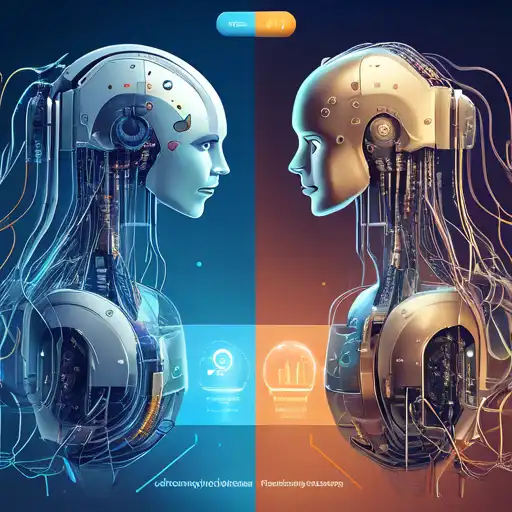Introduction to Machine Learning and Deep Learning
In the rapidly evolving field of artificial intelligence (AI), Machine Learning (ML) and Deep Learning (DL) stand out as two of the most significant and talked-about technologies. While they share common foundations, their approaches, applications, and capabilities differ markedly. This article delves into the key differences between ML and DL, providing insights into how each technology operates and where they excel.
What is Machine Learning?
Machine Learning is a subset of AI that focuses on building systems capable of learning from data, identifying patterns, and making decisions with minimal human intervention. ML algorithms improve their performance as they are exposed to more data over time. Common applications include spam detection, recommendation systems, and predictive analytics.
What is Deep Learning?
Deep Learning, a more advanced subset of ML, utilizes neural networks with many layers (hence 'deep') to analyze various factors of data. DL models are particularly effective in handling unstructured data like images, sound, and text. Applications of DL include facial recognition, natural language processing, and autonomous vehicles.
Key Differences Between Machine Learning and Deep Learning
Data Dependency
One of the primary differences lies in their data dependency. DL models require vast amounts of data to perform well, whereas ML models can achieve good performance with smaller datasets.
Computational Power
DL models are computationally intensive, often requiring powerful GPUs for training. In contrast, ML models can be trained on standard CPUs, making them more accessible for smaller-scale projects.
Feature Engineering
In ML, feature engineering is crucial; experts must manually select and extract features from raw data to improve model accuracy. DL models, however, automatically discover the features to be used for classification, reducing the need for manual intervention.
Interpretability
ML models are generally more interpretable than DL models. The decisions made by ML algorithms can often be understood and explained, whereas DL models operate as 'black boxes,' making it difficult to interpret how decisions are made.
Choosing Between Machine Learning and Deep Learning
The choice between ML and DL depends on the specific requirements of your project. For tasks involving large volumes of unstructured data, DL may be the better option. However, for projects with limited data or where interpretability is key, ML might be more appropriate.
Conclusion
Understanding the differences between Machine Learning and Deep Learning is crucial for leveraging the right technology for your AI projects. While DL offers advanced capabilities for complex tasks, ML provides a more straightforward and interpretable approach for simpler applications. As the field of AI continues to grow, the distinction between these technologies will become increasingly important for developers and businesses alike.
For more insights into AI technologies, check out our articles on Neural Networks Explained and Getting Started with AI.
